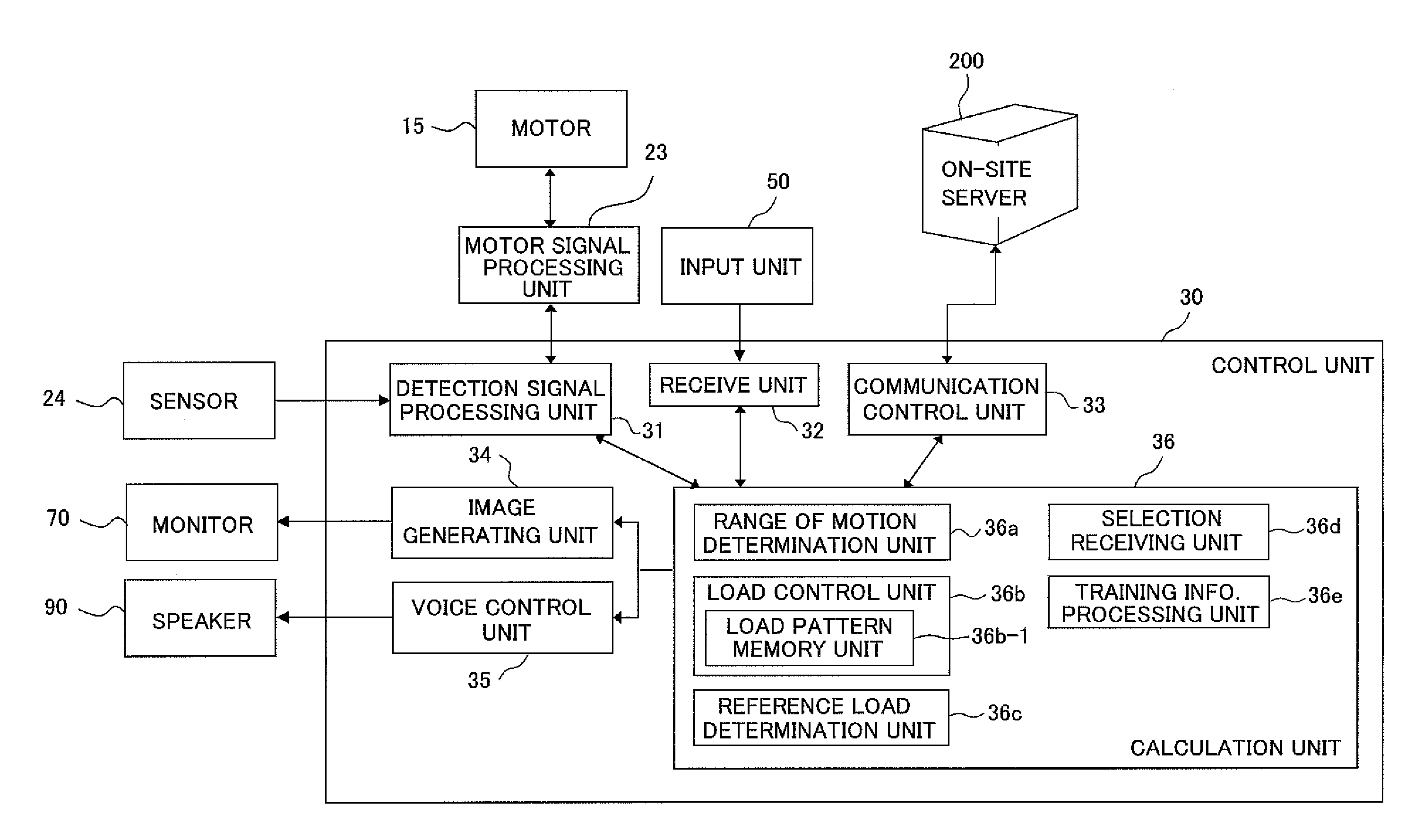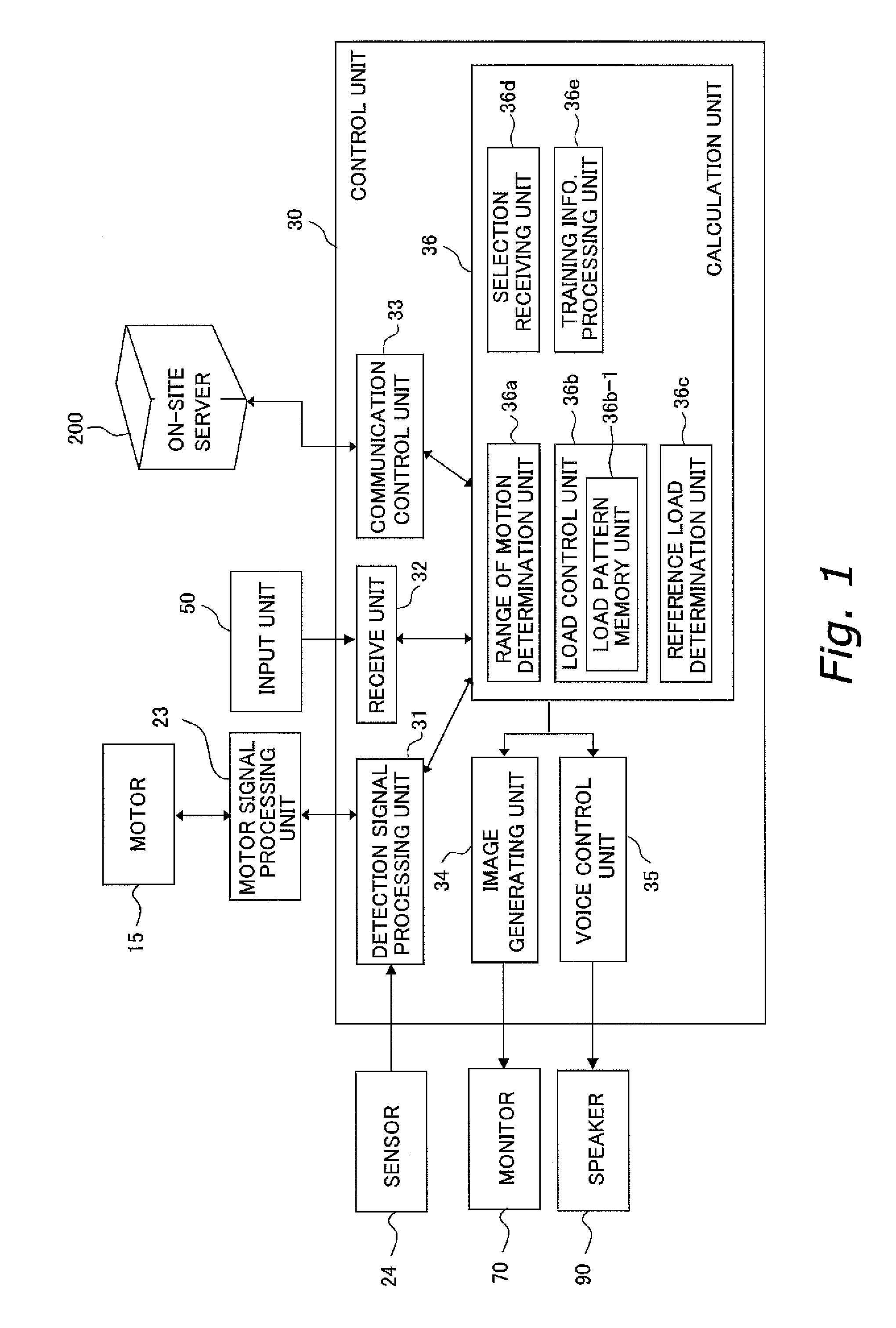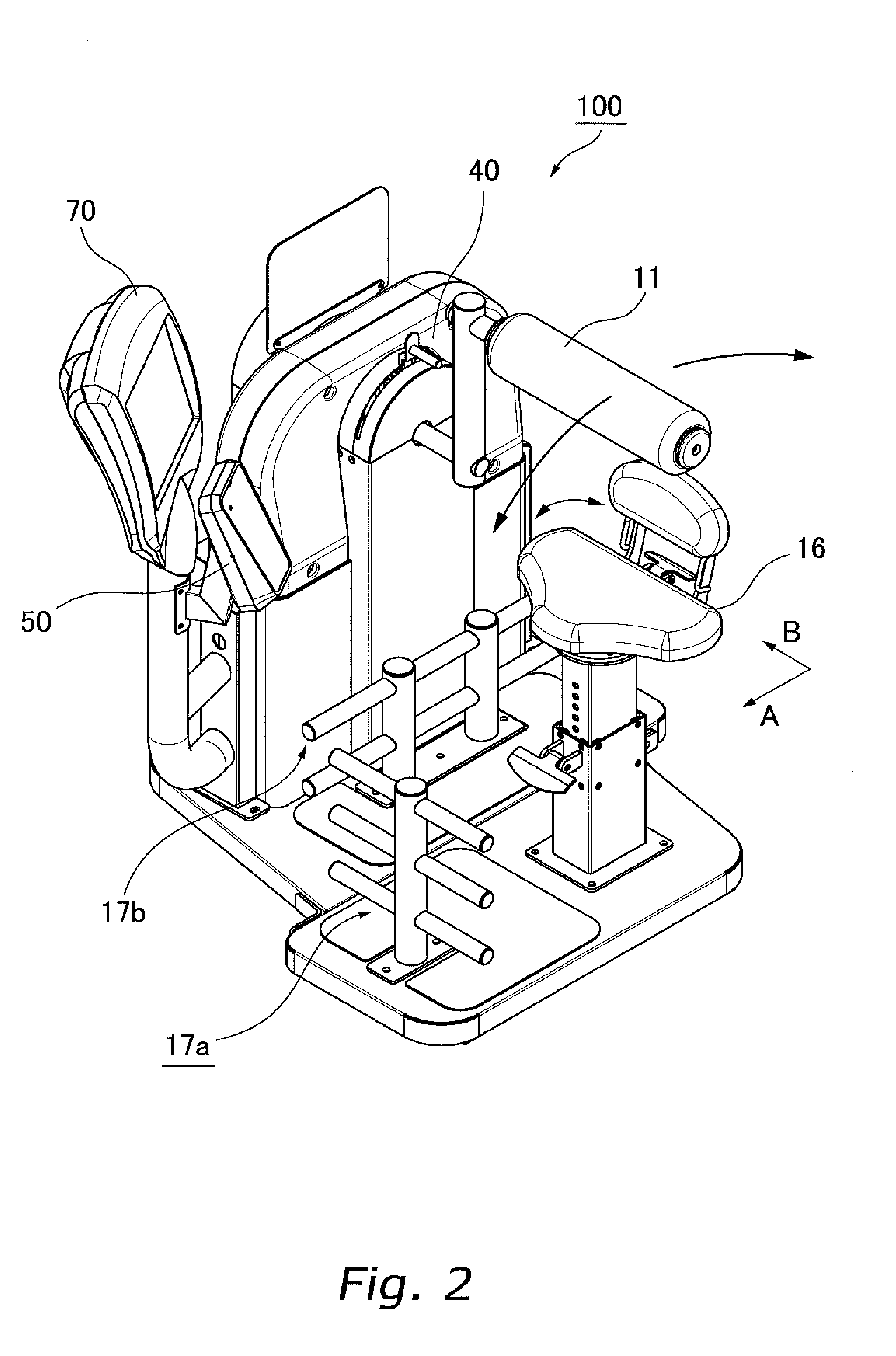Training apparatus
a training apparatus and training technology, applied in the field of training machines, can solve the problems of inability to exercise appropriately, insufficient increase the effectiveness of exercise, inappropriate load change for trainees, etc., and achieve the effect of increasing the load in the forward path, effective variation of load, and improving exercise effectiveness
- Summary
- Abstract
- Description
- Claims
- Application Information
AI Technical Summary
Benefits of technology
Problems solved by technology
Method used
Image
Examples
first embodiment
Training Apparatus Configuration
[0049]FIG. 1 is an explanatory diagram that shows the hardware configuration and the functional configuration of a training apparatus 100 according to the first embodiment of the present invention. The hardware configuration and the functional configuration of the training apparatus 100 will now be explained successively, referencing FIG. 1.
(1) Hardware Configuration
(1-1) Overall Configuration
[0050]The training apparatus 100 is installed in, for example, a facility such as a health club, and is connected to an on-site server 200. The server 200 accumulates personal data of trainees and transmits such in response to requests from the training apparatus 100. Furthermore, in the present embodiment, the server 200 is only installed in a facility such as a health club, but an off-site server (not shown) can also be provided that connects on-site servers nationally or globally. Membership data may be accumulated in such an off-site server and each on-site s...
PUM
 Login to View More
Login to View More Abstract
Description
Claims
Application Information
 Login to View More
Login to View More - R&D
- Intellectual Property
- Life Sciences
- Materials
- Tech Scout
- Unparalleled Data Quality
- Higher Quality Content
- 60% Fewer Hallucinations
Browse by: Latest US Patents, China's latest patents, Technical Efficacy Thesaurus, Application Domain, Technology Topic, Popular Technical Reports.
© 2025 PatSnap. All rights reserved.Legal|Privacy policy|Modern Slavery Act Transparency Statement|Sitemap|About US| Contact US: help@patsnap.com



